Politicon.co
Azerbaijan’s Socialist past and its shade
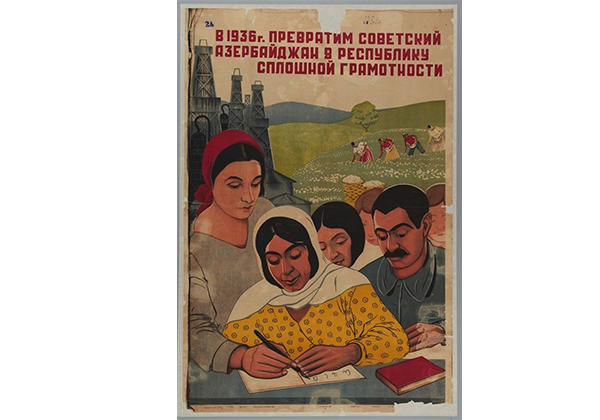
A propaganda poster in Soviet Azerbaijan. In Russian, reading: “In 1936, we will turn Soviet Azerbaijan into a country with complete literacy”
Fidel Castro, the Cuban revolutionary leader passed away on November 25, reopening debates about his political and economic heritage - his Cuba. The zeitgeist of the Cold War era revived with such discussions pitting social security of the communism against the political pluralism, affluence of capitalism. In this vast discourse, where are we Azerbaijanis? How do we accommodate our recent socialist past?
It was only a quarter century ago when Azerbaijan had the word “Socialist” in its official name as a union state of the USSR. However, the history of the leftist activism in Azerbaijan goes beyond the Bolshevik occupation of the country in 1920.
At the dawn of the 20th century, the leftist movements were gaining steam in the then Russian Empire. As part of Russia, Azerbaijan had the booming industrial hub of the Tsardom — Baku. The city was attracting some of the richest of investors and the poorest of workers. With one of the largest income gaps in the world, fast growing, disenfranchised multinational working class, Baku could not but turn into one of the epicenters of the labor movement in industrializing Russia. In December of 1904 after a massive strike, a collective agreement with magnates establishing workers’ rights – the first of its kind in Russia – known as the Oil Constitution, was concluded. In those years, future high-profile Bolshevik leaders, on the top of all, Stalin frequently visited Baku.
In 1917’s February, the Russian monarchy was overthrown, and in October, the Bolshevik Revolution took place. Subsequently, independence of Azerbaijan Democratic Republic (ADR) was declared in May of 1918. At the time, different social democrat or socialist parties, usually with strong nationalist or religious inclinations, existed in the country such as Musavat, Menshevik Hummat, pan-Islamic Ittihad, pro-Sunni Ahrar, etc. In the 120-seat Parliament of the ADR, there were over 50 MPs from social-democrat-leaning Musavat (38), Armenian Revolutionary Federation (Dashnaksutyun) (7), Ahrar (11), while the far-left was represented by at least 12 MPs in the Socialist faction. All leftist parties had broad agendas focusing on workers’ rights, land reforms etc.
After the short-lived independence, in 1920, the Red Army of the Bolshevik Russia occupied Azerbaijan. A local Soviet government was installed, and the centralization of the economy took off.
Subduing all protests, the Bolsheviks started building a Soviet economy, extorting the possessions of the wealthy, outlawing private businesses, nationalizing existing ones. In upcoming decades, collective farms were established. Some overarching social reforms were accomplished. The illiteracy rate drastically decreased as did the poverty rate. Free healthcare services, free housing, massive industrialization significantly raised the living standards.
However, the price paid for socialism in Azerbaijan was not only the repressive Communist rule. Being part of the USSR, a superpower with a Russian face — yet not exactly a Communist Russian empire as goes the Western perception of the USSR — imposed a quasi-colonial clout on all Union states. From this viewpoint, Azerbaijan suffered more as a Muslim nation considered a second class implying backwardness and disloyalty. During the Great Purge, the country’s intelligentsia was almost totally eliminated. In Azerbaijan’s political elite, Russians and Armenians enjoyed a disproportionately large representation. Majority of Azerbaijani conscripts due to their Muslim identity had to serve not in regular military units, but in so-called Stroybats constructing apartments. The national culture and literature were suppressed, and even the name of the national language was changed from Turkish to Azerbaijani to severe links with Turkey.
Over years, a more sober outlook in the public was replacing the faith in Communist ideals especially due to the rampant corruption. Towards the late 1980s, the economy was stagnating. In 1988, Moscow’s misconduct of the brewing conflict around Nagorno-Karabakh and failure to guarantee protection of Azerbaijan’s territorial integrity led to the rise of the independence movement. The failed attempt by Moscow to squash the movement through a violent crackdown in Baku in 1990’s January leaving 140 civilians dead irreversibly turned the public opinion against the USSR.
In less than 2 years, Azerbaijan reclaimed its independence and set out to dismantle the centrally planned administration of the economy. Following was a very harsh period of a transition to the market economy with a steep drop in industrial and agricultural production, thereby, a soaring unemployment. The war with Armenia added up to the difficulties. The economic situation raised in many from older generations nostalgia for the Soviet social security. Yet, this sentiment was too weak to alter the mainstream view adamant about departure from Socialism, connoting a fait accompli and however ironic, the imperialism, i.e. the Russian irredentism. The yoke of the Kremlin and the bloodiest road to independence among all former Soviet nations left the legacy of antagonism against the USSR, and specifically socialism viewed against the background of the Soviets through the lens of the reviving nationalism.
However strong the current nationalism-spurred anti-Socialist sentiment and however conservative the local culture can be, this is not very likely to imply public support to right-wing politics, least of all to laissez-faire capitalism. Soviets left a legacy of strong public preference to social welfare policies, an underlying factor in the decision to keep public education and healthcare free, subsidization of many sectors and other related issues such as retention of a large bureaucracy, etc. This implies a significant ground for popularity of social democracy.
While socialism may be despised because of the absolute control of the economy and abolition of private property, this does not extend to the distaste for the “rectifying” government intervention in the economy through policies envisioned for social ends. It should not come as a surprise given the decades-old vertically integrated management of political and economic affairs by the Soviet central and local governments. This factor also partly accounts for the weakness of the grassroots mobilization, i.e. bottom-up political activism, the functioning of the civil society which exposes one of the important ways the Communist rule rendered the local political culture malformed. The insulation of the government from the grassroots because of the top-down administration style in the Soviets is a hurdle to be overcome to make the public policy-making more accessible to and be in contact with the public. Also, the one-party-dominated governance of the country blurred the distinction of state and government in the mind of many in the public, a perceptional divorce even now not fully complete.
While social democracy has potential to enjoy popularity, this is likely to remain confined to the socio-economic domain. The dominant conservative culture makes unlikely the support for the liberal stands, (e.g. LGBT rights) with which the central left is traditionally associated in the West. However, it, too, should be noted that the conservativeness of the culture, albeit having Islamic roots, remains largely dissociated from the potential to encourage the rise of the political Islam. This is mainly due to the forcible secularization Azerbaijan underwent under Soviets, which left most of the population as non-observant Muslims.
Over seven decades in the 20th century, Azerbaijan was subjected to a historical experiment of building a socialist system, which bequeathed a heritage as complex as the system itself. Whether some parts of this inheritance can be tolerated or should be disposed of in the post-Soviet period, undoubtedly, the Soviets have influenced Azerbaijan profoundly and may be irreversibly in certain ways. As the saying goes: “You can take a man out of the USSR but you can’t take the USSR out of a man.”
About the author:
Toghrul Novruzlu holds an undergraduate degree in international studies from ADA University. He participated in a State Department-funded program on the U.S. public-policy making (SUSI) in Illinois, U.S. and took part in the EU spring school in Brussels, Belgium. He has been an active participant in Model United Nations (MUN), an academic simulation program in Azerbaijan and abroad. His research interests include the Nagorno-Karabakh conflict, Caucasus and Turkey, EU studies in addition to Political Islam.
![]()
- TAGS :
- Azerbaijan
- Soviet
- USSR
- Socialism
- REGIONS :
- Russia and CIS

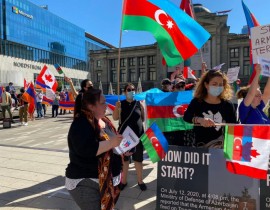
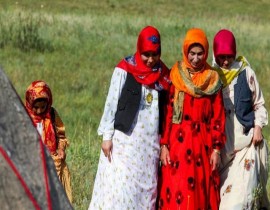
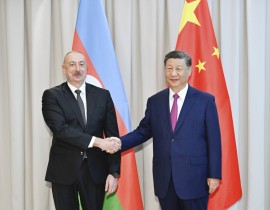
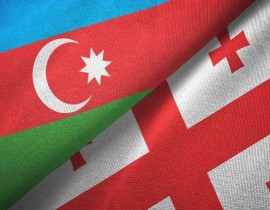
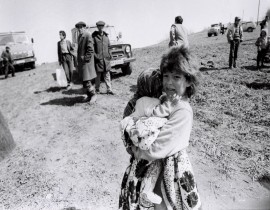
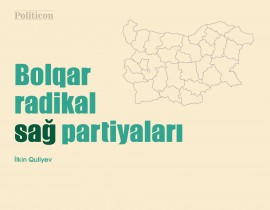
jpg-1599133320.jpg)
